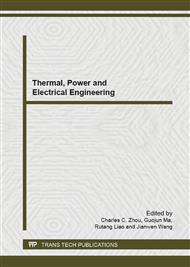p.634
p.639
p.646
p.653
p.662
p.669
p.677
p.682
p.686
Distribution System Restoration Based on Hybrid Particle Swarm
Abstract:
By the heuristic algorithm and particle swarm optimization algorithm combining hybrid particle swarm algorithm proposed combination of heuristic search and stochastic optimization,stochastic optimization process using a spanning tree and the loop matrix operations combined to ensure the system topology constraints to improve the efficiency of solution. The analysis shows that the proposed method calculation speed,easy to converge to the global optimal solution. It can effectively solve the problem of distribution network fault recovery.
Info:
Periodical:
Pages:
662-668
Citation:
Online since:
August 2013
Authors:
Price:
Сopyright:
© 2013 Trans Tech Publications Ltd. All Rights Reserved
Share:
Citation:


